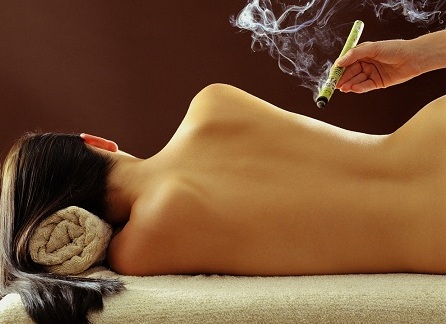Moxibustion – Burn Your Ailments Away
Moxibustion, known as “moxa” for short, is an ancient heat therapy that has been used in china for thousands of years. The purpose of moxibustion, as with most forms of Traditional Chinese Medicine, is to strengthen the blood, stimulate the flow of Qi, and maintain general health.

TCM theory holds that moxibustion has a dual effect of tonification and purgation. Different from needles and drugs, characteristics of moxibustion in materials and using fire determine that its efficacy is inclined to warming and nourishing. The roles of moxibustion can be broadly grouped into warm nourishing, warm dredging, and warm melting. Warm nourishing refers to the benefits of warming Yang, tonifying qi, nurturing blood, and relieving depletion; warm dredging refers to the functions of activating blood, dissolving stasis, promoting qi, dredging channels, and relieving pain; warm melting refers to the roles of reducing phlegm, eliminating stagnation, removing wind, dispelling dampness, drawing out poison, and purging heat. Some people believe that warm dredging is the nature of moxibustion and is the key role of moxibustion effects. The functions of moxibustion, expelling cold, promoting the circulation in meridians and collaterals, clearing away heat, detoxification, and so forth, are dependant on the efficacy of moxibustion for circulating qi and blood flow.
In moxibustion, the leaves of the Chinese herb mugwort (Artemesiae Vulgaris) are dried and then burned using one of several methods.
The ‘moxa stick’ is the most common form in which moxibustion is used to promote healing. Here the dried mugwort is rolled up tightly and wrapped in paper forming a cigar-like stick. The moxa stick can be held in one place, rotated in circles, or ‘pecked’ in a motion similar to a sparrow pecking at food over the area of an acupuncture point. The practitioner places a finger next to the point being stimulated to maintain a comfortable level of heat and to guard the patient from the unlikely risk of burn.
The moxa stick is held approximately a half inch from the skin, although this may vary from patient to patient. Moxa sticks can be used on their own to stimulate an acupuncture point or can be used on a point where an acupuncture needle has been inserted.
Moxibustion has been applied in treating a great range of diseases. A bibliometric analysis on the papers published from 1954 to 2007 in China showed that up to 364 kinds of diseases can be treated with moxibustion. The most proper indications of moxibustion therapy are malposition, diarrhea, and colitis; the common proper indications are urinary incontinence and dysmenorrhea; the next common proper indications are knee osteoarthritis, temporomandibular joint disturbance syndrome, soft tissue injury, heel pain, asthma, urinary retention, and herpes zoster. Moxibustion can also be used to treat weakness, fatigue, and aging related problems.
Moxibustion, like acupuncture, is a complex and varied therapy. Practitioners of Chinese medicine have a number of methods to choose from and will adopt the best methods to suit their individual style of practice.
